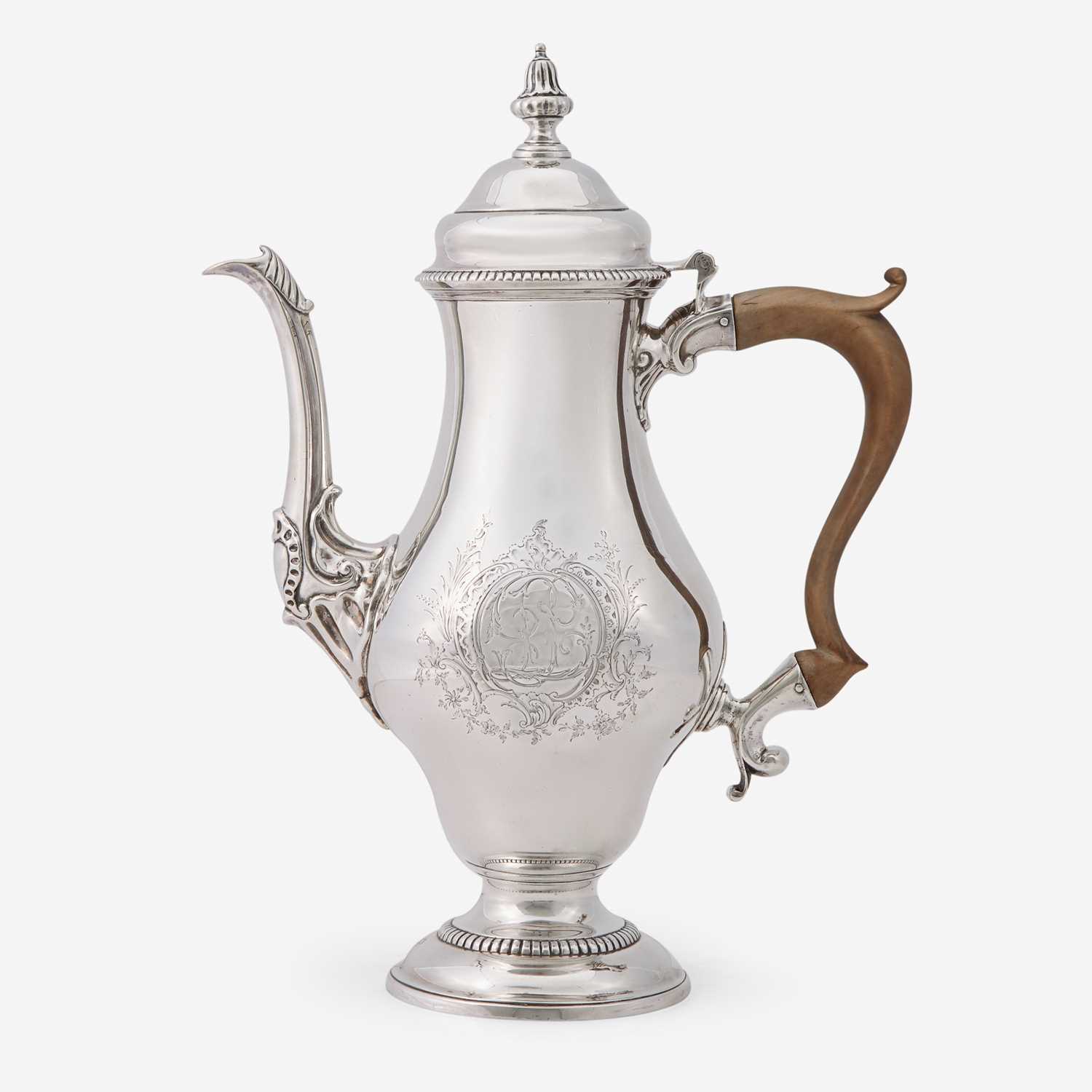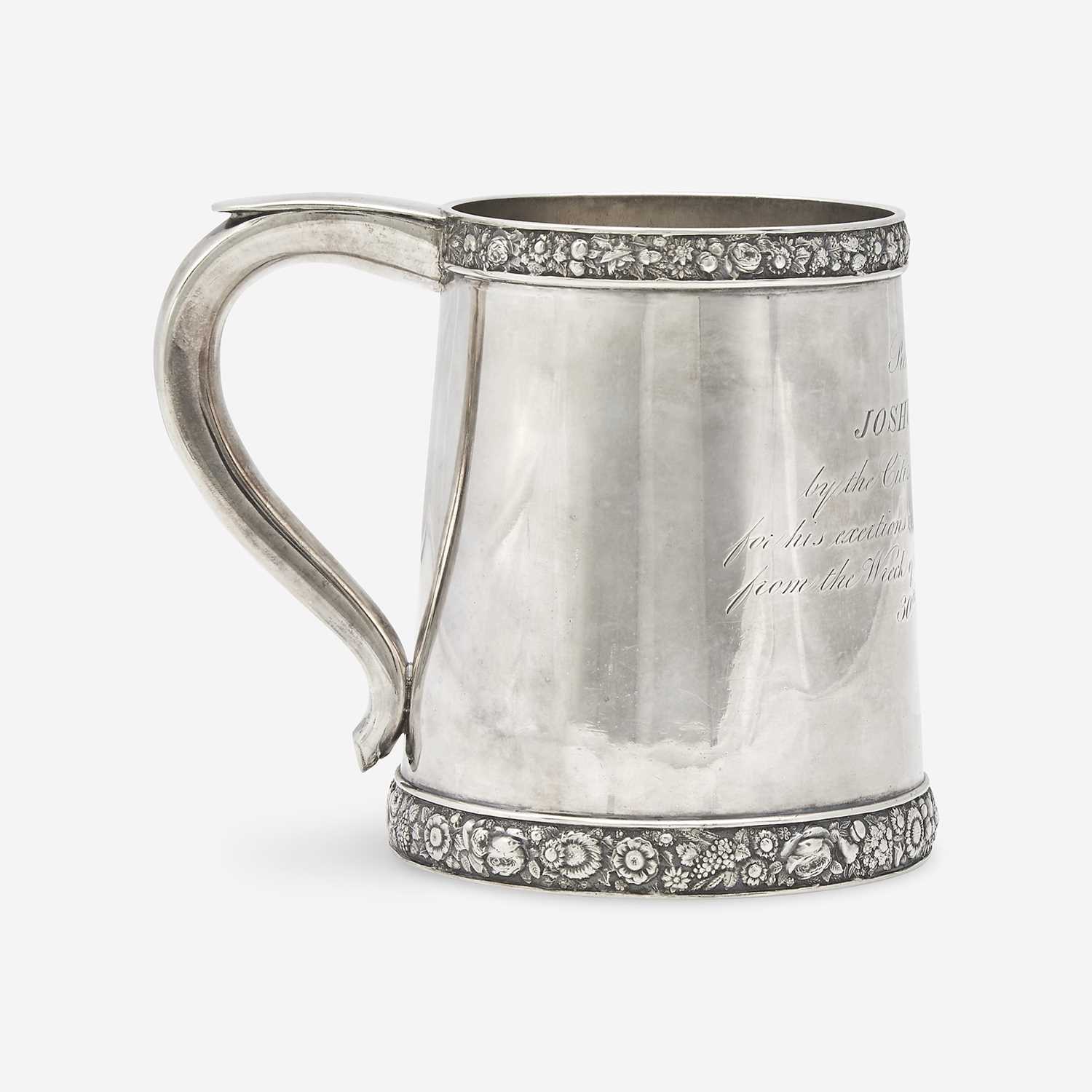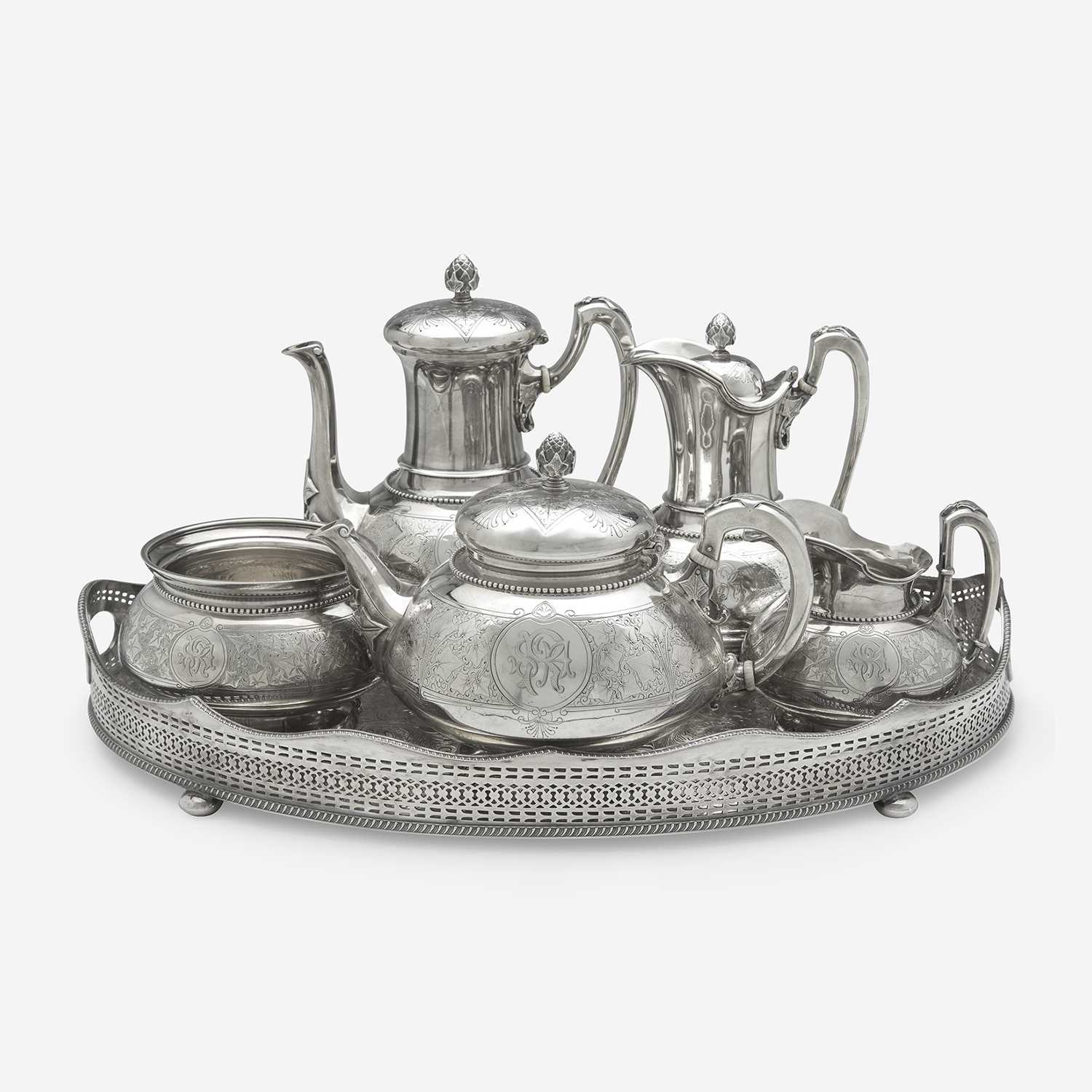Why Silver Was So Important in Early American History
Freeman's to offer extensive selection November 10
Learn more about the history of this significant material in America.
10/21/2021 News and Film, American Furniture, Folk and Decorative Arts
Freeman’s November 10 American Furniture, Folk and Decorative Arts auction features a fine selection of American furniture, paintings, and national flags—and serious collectors of American silver will be pleased to find a wide range of designs from America’s early years, from pitchers and beakers to spoons and punch ladles. The lots in this sale represent a strong grouping of American silver throughout the ages, from Pilgrim-era items to Classical presentation pieces memorializing naval feats to late-19th-century tea and flatware services designed for entertaining.

Early American Examples
American silver continues to dazzle and delight collectors; beyond its pleasing tactile qualities, silver also demonstrates characteristics that tell the story of both the maker and for whom it was made. American silversmiths marked their wares much like their European counterparts, with a hallmark indicating maker or company, and in some cases with other associated marks. The silver objects featured in American Furniture, Folk and Decorative Arts illustrate a few other key elements beyond maker identification that silver connoisseurs seek while assembling their collections: variety of forms, historical relevance, and attention to surface detail.
Lot 56 | A silver caudle cup, Jeremiah Dunner (1645–1718), Boston, MA, circa 1680 | $6,000-8,000
The earliest works featured in Freeman’s November 10 auction represent a number of New England makers and come from a private New Jersey collection. Considered to be the first native-born New England silversmith, Jeremiah Dummer (1645–1718) created tablewares for early settlers of Boston and Massachusetts. Among Dummer’s historically significant creations are a caudle cup (Lot 56; estimate: $6,000-8,000) and an elegant tablespoon (Lot 57; estimate: $1,000-1,500).
Lot 58 | A rare silver beaker, John Coney (1655–1722), Boston, MA, circa 1687 | $10,000-15,000
Dummer’s successor and mentee John Coney (1655–1722) crafted a silver beaker (Lot 58; estimate: $10,000-15,000) and sucket fork (Lot 59; estimate: $3,000-5,000), both considered rare forms. The fact of the beaker’s survival is astonishing both because of its condition over the centuries as well as its previous ownership: the inscription reveals it was owned by William Browne (1608–1687/88), a prominent Salem resident who was active as a judge, merchant, and benefactor to Harvard College. Likely donated to his local parish upon his death, Browne’s gift ensured the beaker’s survival; traditionally, silver is frequently melted down and repurposed to create new objects. This beaker, on the other hand, was loved and cherished, and is now a small but significant piece of American history.
Philadelphia's Silversmithing Legacy
Moving south from New England and New York, several works in American Furniture, Folk and Decorative Arts were made by Philadelphia silversmiths. A coffeepot created by William Hollingshead (1728–1808) is a fine example, featuring Rococo details including an intricate cartouche, while the body exhibits an elegant restraint (Lot 88; estimate: $20,000-30,000).
Lot 88 | A silver coffeepot, William Hollingshead (1728–1808), Philadelphia, PA, circa 1770 | $20,000-30,000
A dish cross made by David Hall (1767–1814) of nearby Lancaster is a form more often seen in English silver and rarely encountered in American examples, and is engraved with the names of the original owners, John Houston and Susanna Wright Houston, who lived in Lancaster County (Lot 90; estimate: $5,000-10,000). The dish cross signifies the importance of familial associations, and the legacy of the Houstons can still be felt in Philadelphia today—America’s first student union, Houston Hall, was named after a descendant of John and Susanna in the late 19th century.
 Lot 90 | A rare silver dish cross, David Hall (1767–1814), Lancaster, PA, circa 1790 | $5,000-10,000
Lot 90 | A rare silver dish cross, David Hall (1767–1814), Lancaster, PA, circa 1790 | $5,000-10,000
Customized Works
During the latter half of the 19th century, silver was produced to satisfy the entertaining ambitions of clients. Engraved monograms from this period are common, as patrons wanted to customize commissioned works. These customizations were often made on objects intended as wedding gifts for a family member, but some engravings were made for more solemn reasons. A presentation cann made during the Classical era memorializes the contributions of Joshua Knight, who rescued four sailors from the Sea Fox, which wrecked on October 30, 1821 (Lot 180; estimate: $1,000-1,500).
Lot 180 | A silver presentation cann, John W. Forbes (1781–1864), New York, NY, dated "1821" | $1,000-1,500
Beyond gifts and decorative works, many items in American Furniture, Folk and Decorative Arts were intended for daily use; Tiffany & Co. and Gorham Manufacturing Company produced some of the highest quality items for household use, paying specific attention to a diversity of designs and new patterns influenced by revival styles. A Gorham flatware service in the “Mythologique” pattern, for instance, was meant to both be functional and to impress with the fantastical figural scenes found on the handles (Lot 218; estimate: $2,000-3,000). Inspired by Greek mythology, the flatware added a level of sophistication to the dinner table—as would a five-piece Tiffany & Co. tea and coffee service in the “Ivy” pattern (Lot 211; estimate: $3,000-5,000).
Lot 211 | A five-piece sterling silver tea and coffee service in the "Ivy" pattern, John Chandler Moore (c. 1803–1874) for Tiffany & Co., New York, NY, 1854–1870 | $3,000-5,000
View the rest of our November 10 American Furniture, Folk and Decorative Arts auction.
VIEW LOTS
Have something similar? Get in touch with our American Furniture, Folk and Decorative Arts department to request a complimentary auction estimate.
REQUEST AN ESTIMATE




